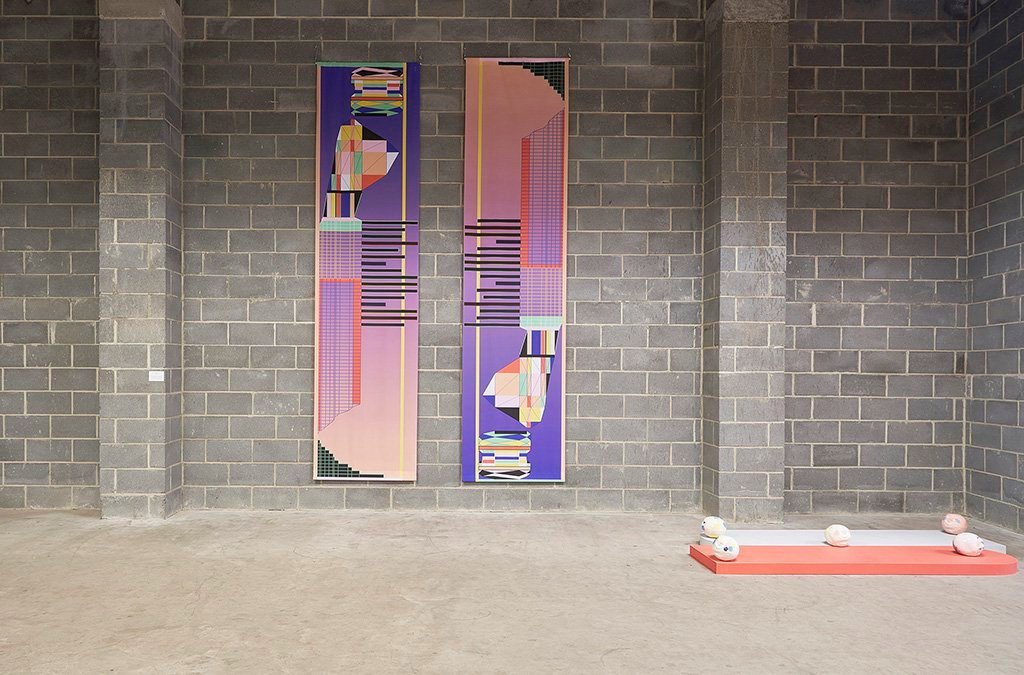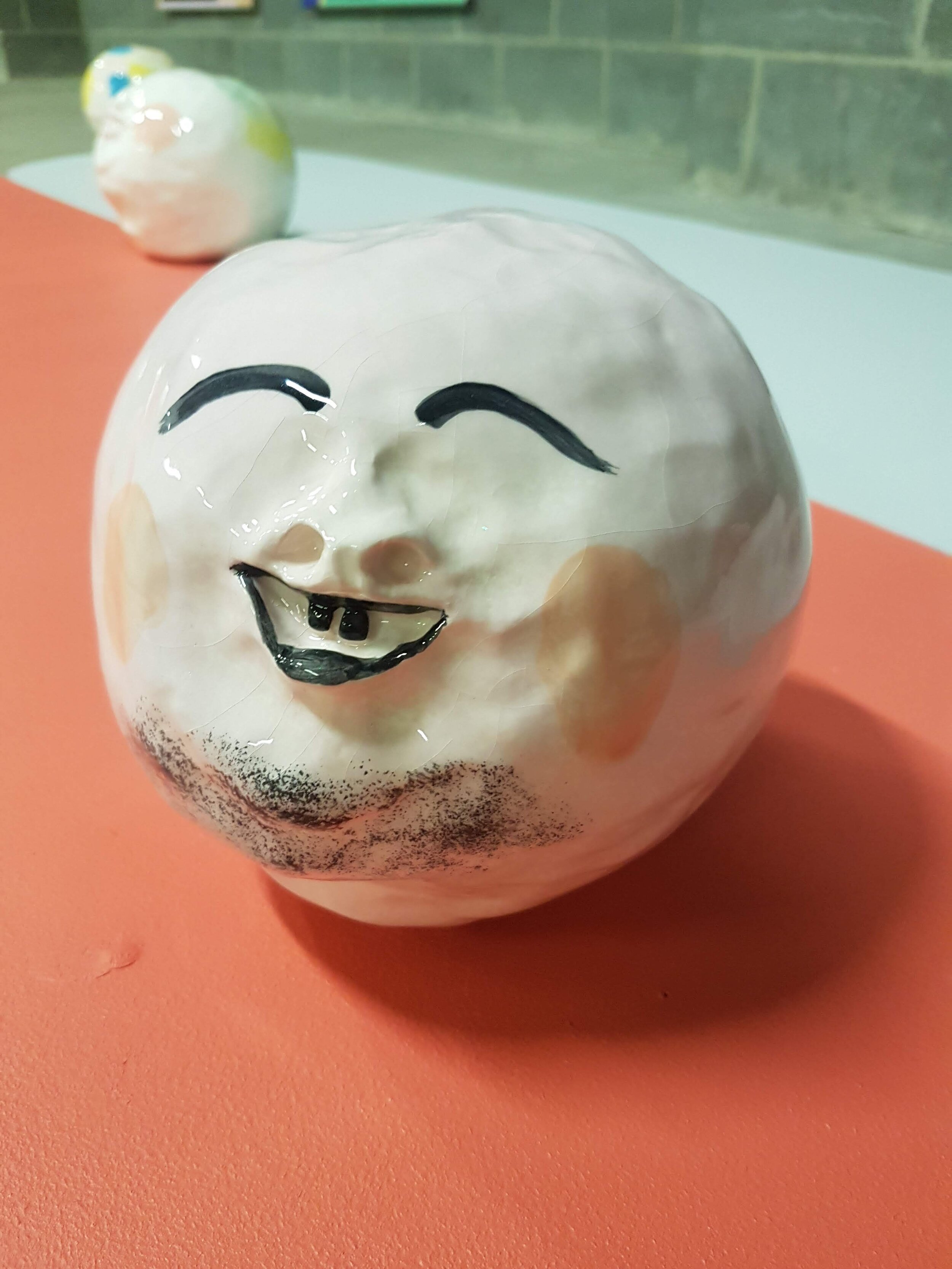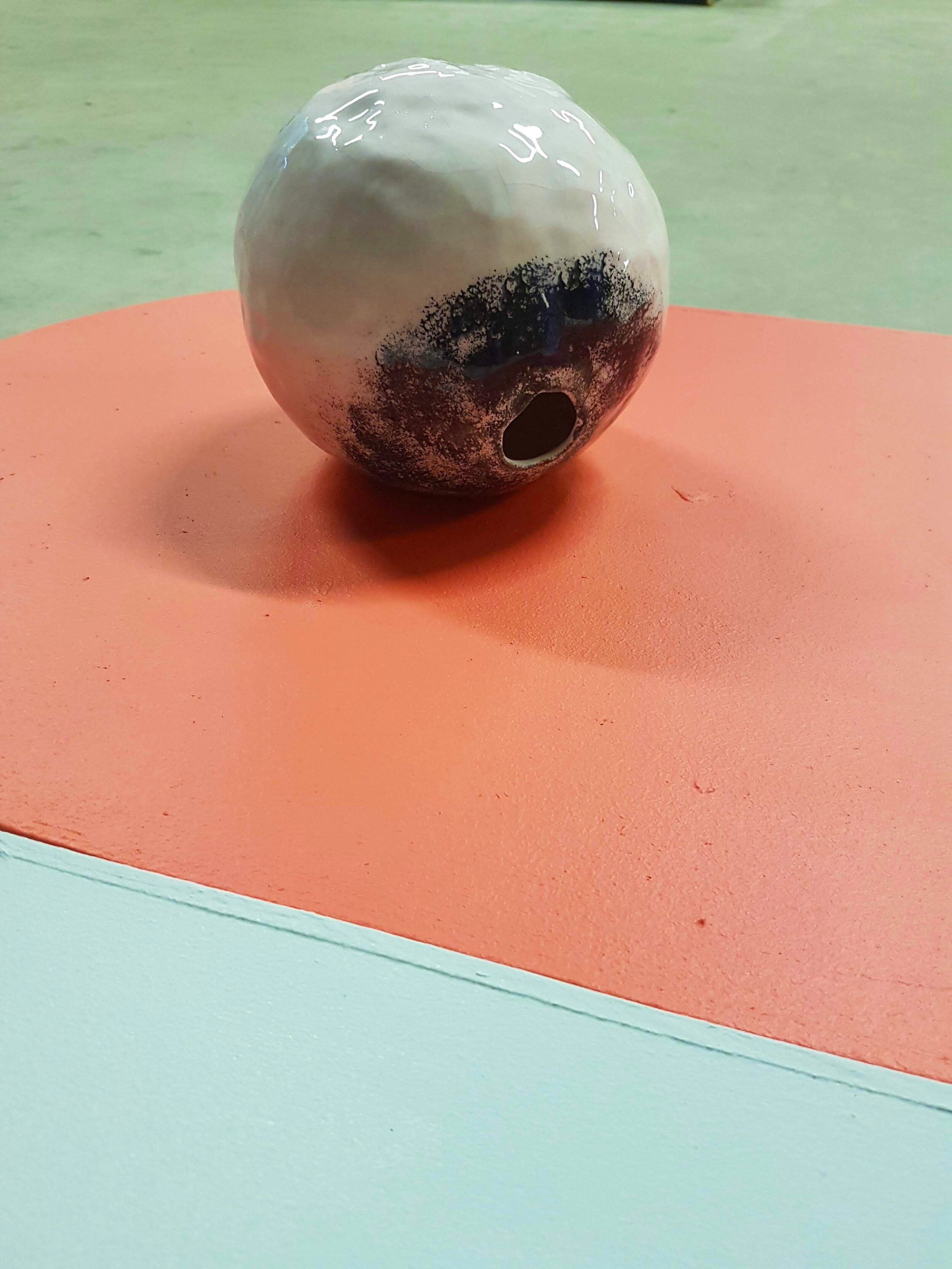
Centre of Gravity, Soapworks, Bristol, 2020 | Photo: Jo Hounsome
Taking over a former department store, my installation for the Centre of Gravity exhibition used walls from the former furniture retail displays with ceramics, digitally printed wall hangings, and salt dough objects, to create a homage to the multiple histories of the building, as a consumer palace and soap factory.
Repainted Gardiner Haskins furniture showroom display walls, ceramic soap dish, ball and heads, salt dough fingers and eye, suede offcut, knitted textile sample, the O from the Ercol sign.
Display units from the Gardiner Haskins mid-century furniture showroom are reconfigured into a new environment to mosey around. The work imagines the building’s different pasts, specifically its people, those who once worked here, manufacturing soap or selling and merchandising homewares. Also, the behavioural patterns of visitors to the department store, the pleasure of shopping and the boredom of waiting, which it often entails. The ceramics and salt dough objects are like votive offerings, in a temple of many incarnations; a temple of consumerism, homemaking and productivity.

Centre of Gravity, Soapworks, Bristol, 2020 | Photo: Benjamin Jones | Microsoft Excel spreadsheet drawing printed on knitted textile, metal rods, wire I use Microsoft Excel as a drawing tool in response to my ongoing interest in gender, labour and social attitudes to work. The mundanity and clunkiness of the medium for making large wall hangings became an involved labour in itself. The forms are inspired by the shapes and colours of the department store and former factory, with suggestions of both the decorative intimacy of household Venetian blinds and the industrial shuttering of the warehouse space in which it is hung. The column and its ruin is a familiar image of power and patronage, the built environment bearing the imprint of social and political change.

Centre of Gravity, Soapworks, Bristol, 2020 | Ceramics on repurposed display board | Photo: Jo Hounsome | The Josiah Heads started as a collection of men traipsing around on Saturday after their wives - a vignette of gender relations. But through making, they morphed into a troupe of jolly industrialists. These were in part inspired by the contradictory figures of philanthropic industrialists who created model villages for workers with good living conditions, yet whose hierarchy and implication in the negative social and environmental impact of industrialisation are still felt.

Photo: Jo Hounsome




Photo: Jo Hounsome

Photo: Jo Hounsome

Photo: Jo Hounsome

Stoneware soap dish with salt dough eye | Photo: Jo Hounsome


